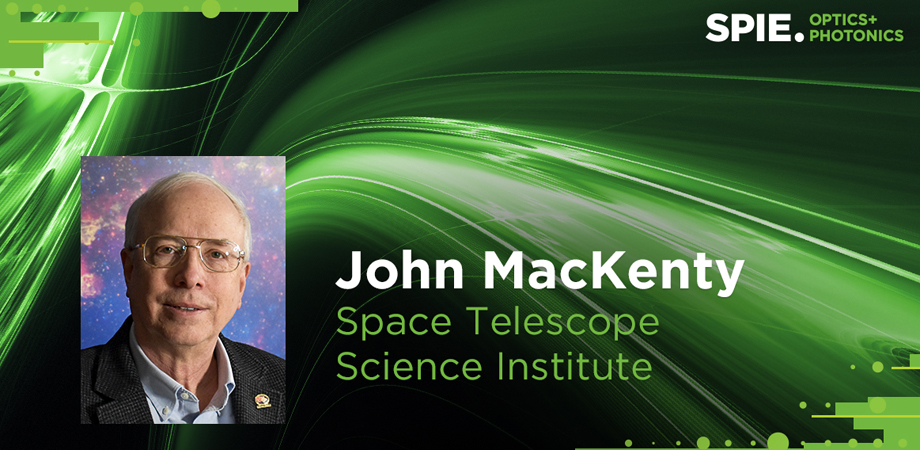John W. MacKenty and the Hubble Space Telescope

“There is a place for many people and many technologies in space astronomy,” says John W. MacKenty, a mission scientist for the Hubble Space Telescope (HST) and senior scientist at the Space Telescope Science Institute (STScI). His work on HST involves broad oversight of all aspects of its science operations with his primary responsibility being to maximize the science return from the HST mission.
MacKenty, recipient of the 2023 SPIE George W. Goddard Award in Space and Airborne Optics, notes that HST is unique among astronomy space missions by virtue of its multiple upgrades during servicing missions. He will discuss his work on the HST and other astronomy missions at 2023 SPIE Optics + Photonics in San Diego.
What are or were some of your favorite projects at STScI?
My favorite project was the design, development, and flight of the Wide Field Camera 3 (WFC3) science instrument. I worked on this from early 1998 until 2015 when I transitioned into my current role. This was a wonderful team of people working on a very challenging task with many partners within NASA, academia, and the corporate world. Helping this go from a concept to a functioning instrument in space was very satisfying, as was seeing thousands of scientists around the world make use of its data.
I've also had the good fortune to be part of a number of fruitful scientific collaborations that have measured the expansion rate of the Universe, studied populations of massive stars, and explored the evolution of galaxies.
What led to your interest in astronomy, and in working with telescopes?
I started college interested in physics, and the kindness of several astronomers at the Harvard—Smithsonian Center for Astrophysics drew me into astronomy. I had previously had an amateur interest in astronomy, but seeing the connections to physics and getting hands-on experience with large-ish telescopes got me even more interested. Also, it became apparent that astronomy offered an interesting combination of physics and engineering that fits my generalist nature.
How long have you worked with HST?
I joined the Space Telescope Science Institute in October 1986 and have worked continuously on HST since that time. Over the years I worked on the Wide Field/Planetary Cameras 1 and 2 (WF/PC1, WF/PC2), the Near Infrared Camera and Multi-Object Spectrometer (NICMOS), and WFC3 before moving into the mission office — our coordinating body — as the mission scientist.
What do you feel are some of the most interesting things we’ve learned about the Universe through HST?
It will always provide new surprises! We never anticipated observations of transiting exoplanets while designing WFC3 in 1998-1999, but they account for about 20% of all of its observations. Cosmology was relatively simply when I was in graduate school, although general relativity didn't seem so simple when problem sets were assigned. All we needed to do was measure two parameters: Ho and qo. Now we cannot explain 95 percent of the Universe (i.e. Dark Matter and Dark Energy) and even the consensus model is starting to show some cracks (i.e. the Hubble tension).
What are some of the lessons learned from the HST that will be applicable to future telescope projects?
Telescopes in space are immensely capable tools. Our ability not only to access a broader range of wavelengths enables a better understanding of natural phenomena, but the capability of making precision measurements is equally transformative. Also, very importantly, bigger is better!
What do you see as the future for HST? For space exploration?
HST longevity has far exceeded everyone's fondest hopes since it was launched in 1990. I certainly hope to see it keep going for years to come and to continue to provide astonishing results. As a complement to JWST — and hopefully someday to the Roman Space Telescope — we are getting more from the observatory than ever before. In the long run, I hope that the example of HST working with the human space-flight program will enable the construction and servicing of increasingly large telescopes.
| Enjoy this article? Get similar news in your inbox |
|



